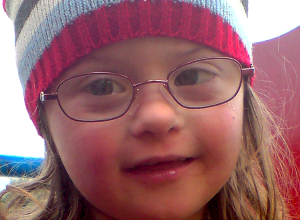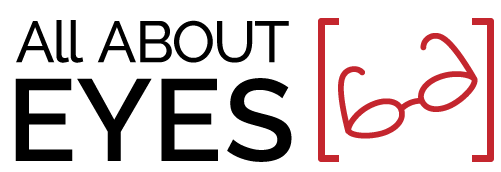
Photo from Down Syndrome Association
October is Down syndrome awareness month! All About Eyes offers specialty eyewear for our patients with Down syndrome, and we also cater to their special needs during eye exams.
Down syndrome, named for the English physician John Langdon Down, who classified the genetic disorder in 1862, occurs in 1 out of every 792 births in the United States each year. That’s about 6,000 babies born with the syndrome.
There are several defining genetic characteristics that go along with this syndrome, and one of those is vision-related issues. Parents are strongly encouraged to seek a comprehensive eye exam for their infant diagnosed with Down syndrome by 6 months of age so that the eye doctor can examine the child for cataracts, strabismus, and nystagmus. As with typically developing children, early intervention is a key factor in treating those conditions and preserving vision. Because vision-related issues tend to be more prevalent in children with Down syndrome — and up to 50% of those children need corrective lenses — parents are also encouraged to have their child’s vision examined once a year so that any issues can be quickly addressed.
According to the National Down Syndrome Society and the American Academy for Pediatric Ophthalmology and Strabismus, these are the types of vision issues people with Down syndrome can face:
-
- Refractive issues (near, far, and astigmatism).
- Strabismus (crossed eyes).
- Keratoconus (a cone-shaped distortion of the cornea for up to 30% of those with Down syndrome. Usually diagnosed around puberty and worsened by eye rubbing.).
- Cataracts.
- Glaucoma.
- Blepharitis (inflammation of the eyelids).
- Nystagmus (involuntary shaking of the eyes).
- Upward slanting of the eyelids.
- Prominent folds of skin between the eye and nose (may lead to amblyopia).
- Small white spots present on the iris called Brushfield’s spots (they are harmless).
- Tear duct abnormalities.
In addition to the visual challenges people with Down syndrome face, the other major challenge is finding a good fit for eyeglasses. Most people with Down syndrome have a flat nose bridge (about 70%), their heads are narrower than the average person’s, and the distance between the temples and the nose is shorter. This all adds up to needing specialty eyewear to comfortably accommodate the Down syndrome eyeglass-wearer. We carry these specialty glasses at our shop, so please stop by for a fitting!

